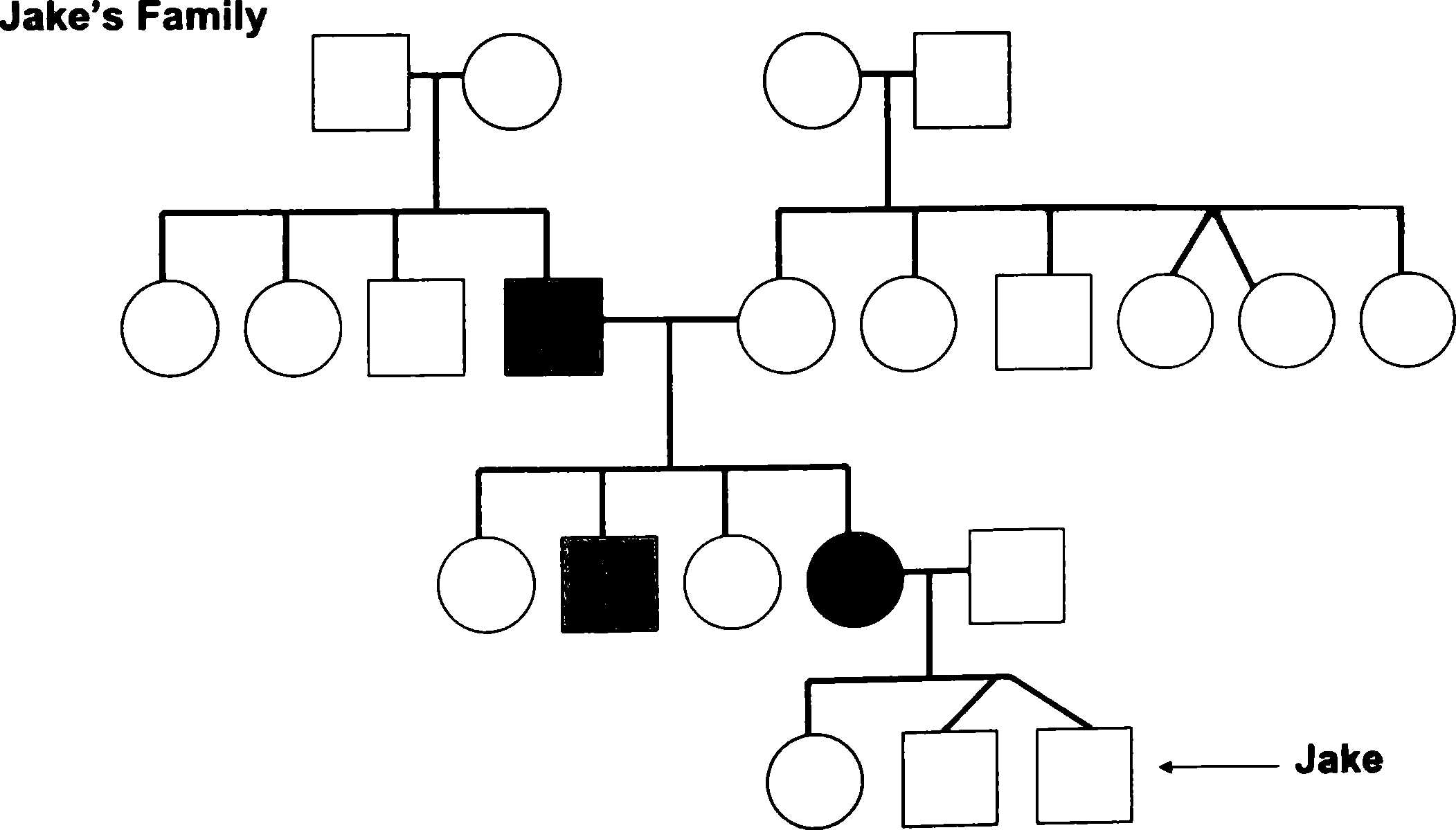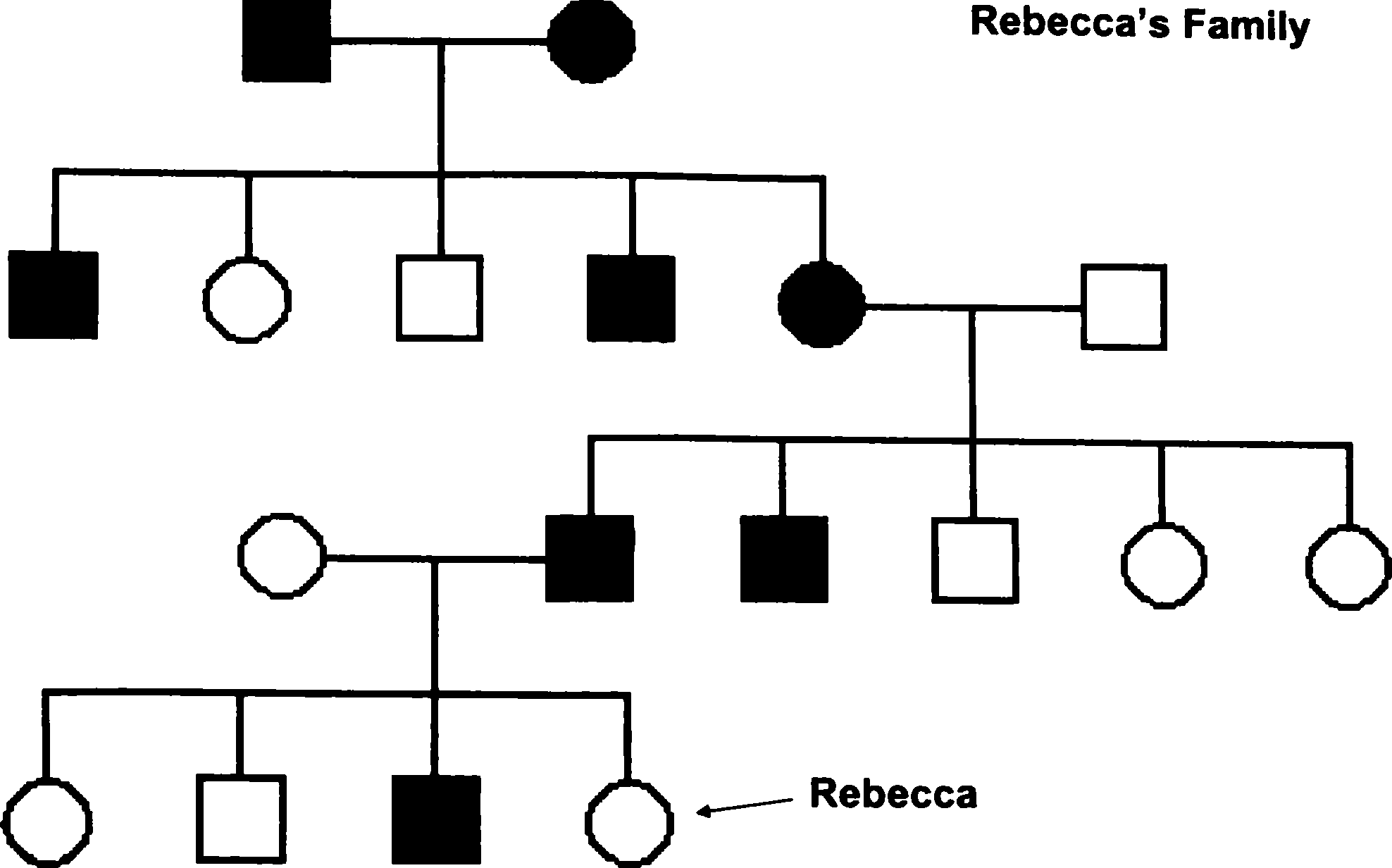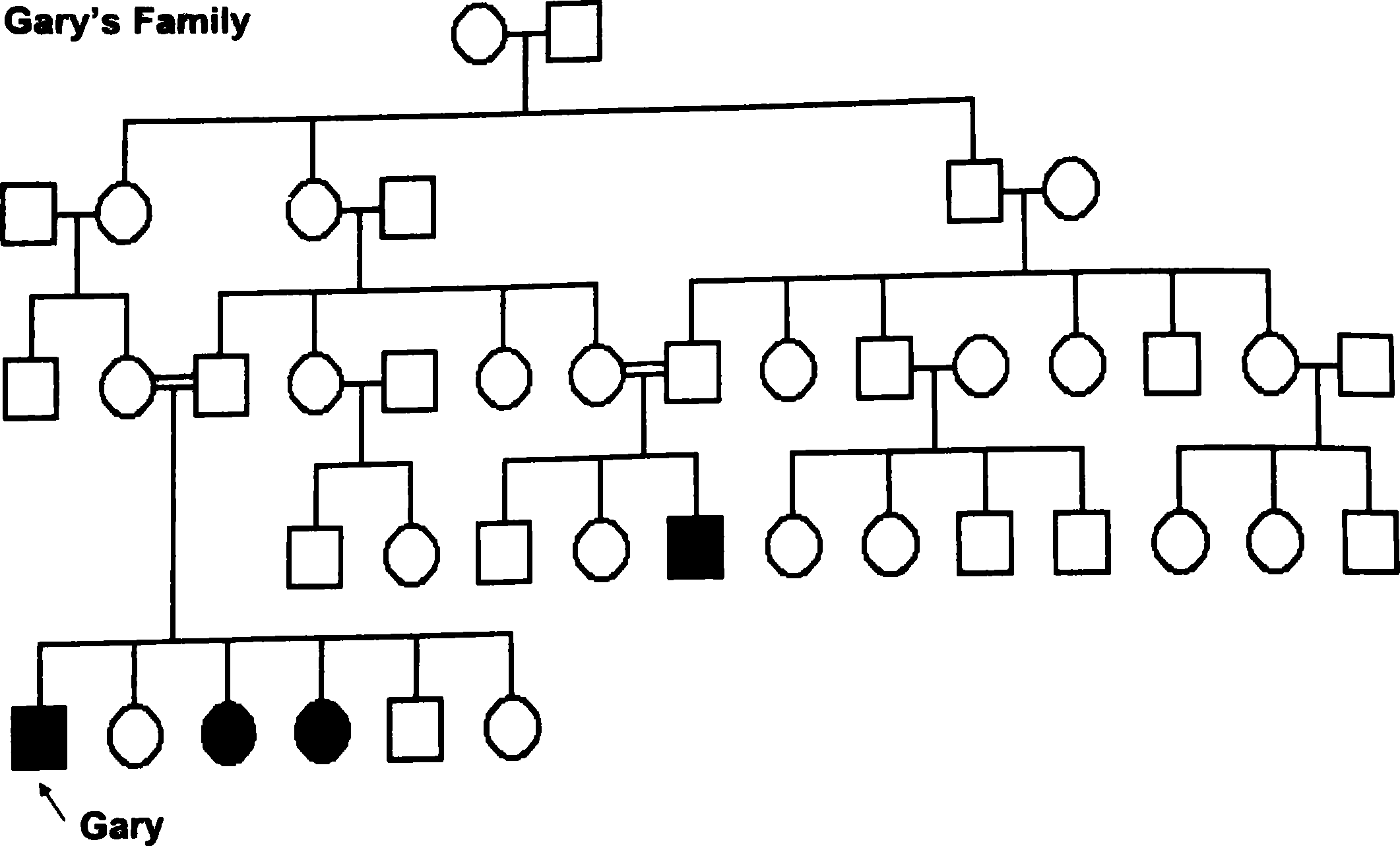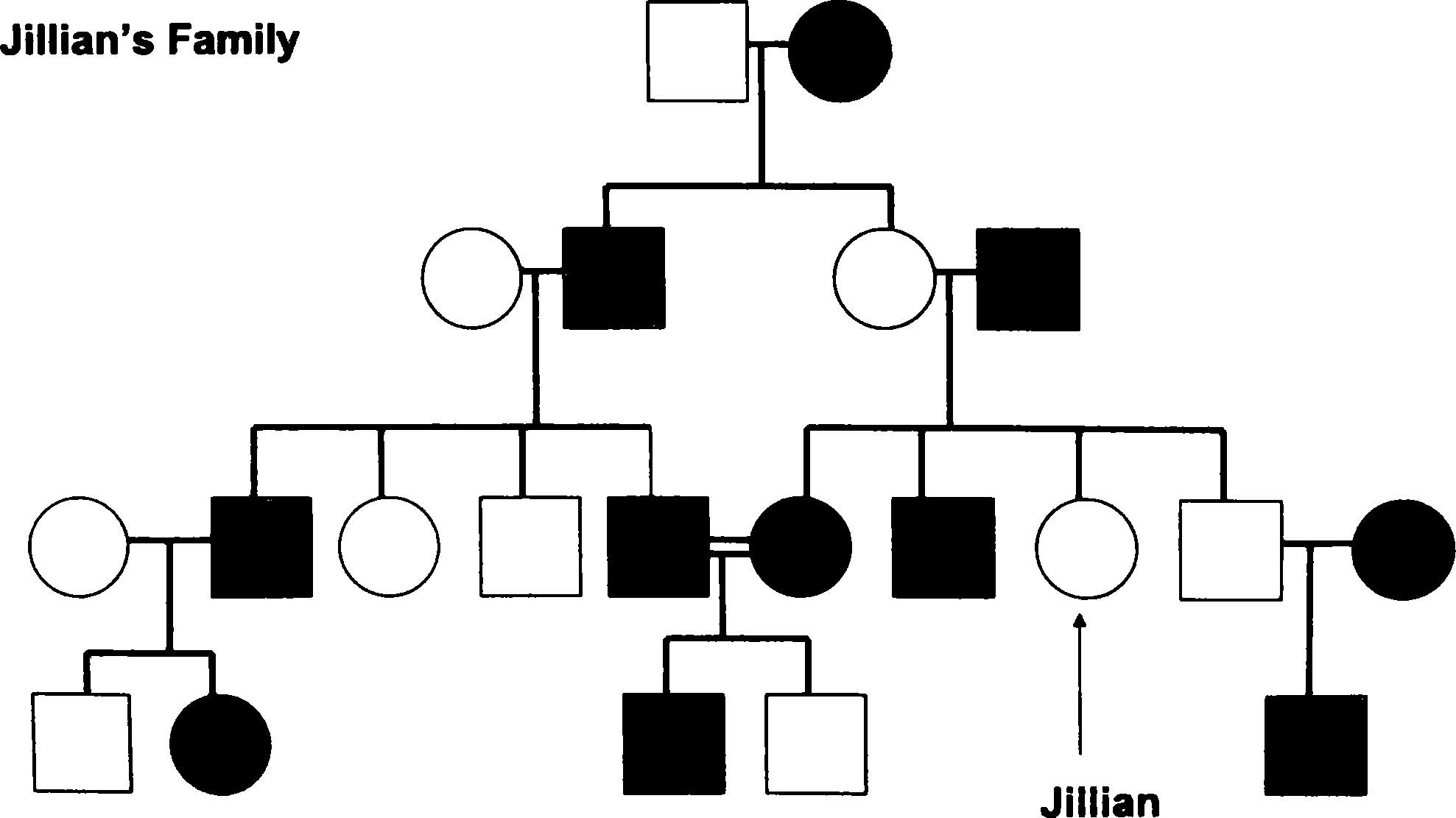9.3: Lab 8 report
- Page ID
- 49711
Your name
-
Based on the table, do you think that recessive traits are rare? Why or why not? Explain your answers with references to your data! (3 pts)
Your phenotype Your genotype Number in class with each phenotype % of class with trait Hairline: widow's peak W- continuous ww Earlobes unattached E- attached ee Skin pigmentation: freckles F- no freckles ff Toe length: 2nd toe longer T- 1st toe longer tt Thumb hyperextension: cannot be bent back H- can be bent back 60° hh Bent pinky: pinky bends L- pinky straight ll Interlacing of fingers: left thumb over right I- right thumb over left ii -
Below, you will be given with different cases of pedigrees. Typically, instructor controls that every table receive at least four different cases. Please note that by default it is assumed that the spouse does not have the “diseased” allele of the partner.
Do not forget to calculate likelihoods. It is also recommended to show Punnett squares.
Note: to avoid confusion, always use different letters for different traits!
Write down the number of case and answer all questions from case(s) chosen (12 pts).
Case 1
Figure \(\PageIndex{1}\): Abby’s family Abby’s family has a history of Phenlketonuria (PKU). Individuals with PKU lack the enzyme that converts a non-essential amino acid (phenyalanine) into a useful one (tyrosine). High levels of phenyalanine accumulate in the blood affecting neuronal development—especially in children. Mental retardation can be a result. Since phenylalanine is found in many proteins, patients afflicted with PKU can escape the disease by strictly limiting themselves to low protein diets.

Figure \(\PageIndex{2}\) Steven has Huntington disease. Huntington’s disease is characterized by degeneration of the nervous system causing uncontrollable movements, dementia, and psychiatric disturbances. Loss of motor skills eventually prevent swallowing and speech. Huntington’s generally develops in a person’s thirties or forties, leaving the afflicted children and spouse to care for them.
-
Is it possible for Steven and Abby’s children to have PKU? Explain. Is it dominant or recessive? Why?
-
Is it possible for Steven and Abby’s children to have Huntington’s disease? Explain. Is it dominant or recessive? Why?
Case 2

Figure \(\PageIndex{3}\) Jake’s family has the most common lethal genetic abnormality in the United States—Cystic Fibrosis. Cystic Fibrosis is characterized by excessive secretion of mucus from the lungs, pancreas, and other organs. The mucus is very thick, causing problems with breathing, digestion and liver function. It also makes the person especially vulnerable to infections like pneumonia. Without a special diet, and frequent pounding on the chest and back (to clear the lungs of mucus), most children with CF die by the age of 5.

Figure \(\PageIndex{4}\) A rare trait in Rebecca’s family causes Marfan’s syndrome, in which the connective tissue is not as rigid as it should be. The long bones of the body continue to grow causing an abnormally tall, thin individual, with a narrowed face. The lens of the eyes may be dislocated. The heart valves and arteries stretch and leak, Lung, skin and neurological problem are also common. Rebecca does not have Marfan’s, but is concerned she might be a carrier of the disease.
-
Is it possible for Rebecca and Jake’s children to express Marfan’s syndrome? Explain. Is it dominant or recessive? Why?
-
Is it possible for Rebecca and Jake’s children to express Cystic Fibrosis? Explain. Is it dominant or recessive? Why?
Case 3

Figure \(\PageIndex{5}\) Gary is an albino. Albinos lack pigment, causing very pale skin, hair and eyes. They tend to suffer more UV damage than normal individuals, and are therefore forced to wear long sleeves, pants, sunglasses, hats and gloves whenever exposed to sunlight.

Figure \(\PageIndex{6}\) Many of Jillian’s family have a type of dwarfism called achondroplasia. In this condition, the head and torso develop normally, but the limbs are short. Only heterozygous individuals have this disorder. The homosygous genotype causes death of the embryo. Jillian does not have this achondroplasia, but wants to be sure she will not pass on the disorder.
-
Is it possible for Gary and Jillian’s children to be dwarfs? Explain.
-
Is it possible for Gary and Jillian’s children to express albinism? Explain.
-
Will the cousin marriage in Jillian’s family produce albinos? Explain.
Case 4

Figure \(\PageIndex{7}\) Leptodigitalia occasionally shows up in Mike’s family. Leptodigitalia is a condition where the fingers and toes are excessively long and slender. Such digits are extremely fragile and often suffer frostbite in conditions considered normal to unaffected individuals. Mike has this trait, but does not wish to pass it on to his children.

Figure \(\PageIndex{8}\) Sally’s family has genetic predisposition to syndactyly, a condition in which two or more digits are fused together. While she does not exhibit this condition, she is concerned that she might be a carrier of this trait.
-
Is leptodigitalia conferred by dominant or recessive allele(s)? Why?
-
Is syndactyly conferred by dominant or recessive allele(s)? Why?
-
What are the odds that Sally and Mike’s children will have both syndactyly and leptodigitalia? Explain.
-


